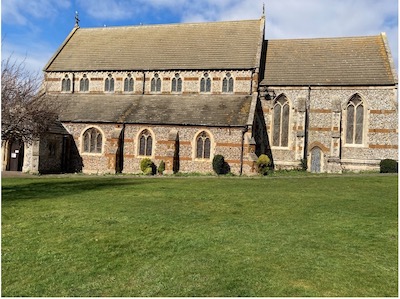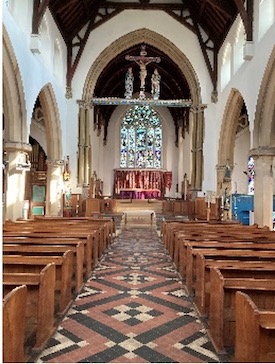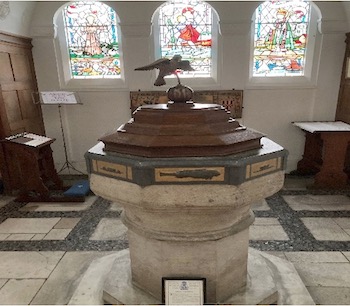
St. Edmund's, Hunstanton

Postal address
St. Edmund's Church
3, Church Close
Hunstanton
Norfolk
PE36 6BE
Churchwarden
Mr Garry Langham
cwhunstanton@saxonshorebenefice.co.uk
07840 101810
The church is usually open from 10am till 4pm every day.
A service of Holy Communion is held each Sunday with the exception of the first Sunday of each month when there is a sung Morning Prayer service.

THE CHURCH
St Edmund’s church has been a centre of Christian worship for more than a century. Built on land given by the Lord of the Manor it has ancient associations with the history of northwest Norfolk. It also has strong local connections
and is a living force in the life of the present population of Hunstanton. The Victorian seaside town of new Hunstanton was the vision of the Lord of the Manor of Hunstanton Henry L’Estrange Styleman le Strange. As the population of
the new town began to grow in the mid-nineteenth century there was a need for the town to have its own church and the first stone was laid on Ascension Day 1865. The chancel and sacristy were completed as soon as possible and
opened for use on Thursday 19th April 1866. The West wall, only a temporary structure at the end of the chancel, blew down the following year during one of the great gales common in this part of Norfolk. The damage was made good
until the nave could be completed in 1872 when the Bishop of Rochester came and formally dedicated the building, in the name of St Edmund, to the worship of God. The South aisle was completed in 1879.
St Edmunds was served by the clergy of St Mary’s Old Hunstanton until the beginning of the 20th century when it became a separate ecclesiastical parish. On 5th September 1903 the church was consecrated by Dr Sheepshanks, the
Bishop of Norwich.

The body of the church is lit partly by the original clerestory windows and partly by the windows of the North and South aisles. The stained glass of these windows was installed between 1912 and 1966 and tells the
dramatic life-story of St Edmund. The windows in the chancel date from the 1890s and commemorate local people, including JS Valentine, the engineer who was involved in the early plans for Hunstanton including the now demolished
railway station.
THE FONT
The font in St Edmund’s church is placed close to the traditional medieval position, which is near to the entrance of the church.

The font was presented to the church by the Lady of the Manor, Hamon le Strange’s wife Emmeline, in
1893, but it dates back to the 15th century and is probably the oldest item in the church.
It came to St Edmund’s from St Giles chapel, Fressingfield, close to Hoxne where Edmund was killed. The fish decoration, of a later date, illustrates
a symbol chosen by early Christians, the letters of the Greek word for fish forming an acrostic (a poem, word puzzle, or other composition in which certain letters in each line form a word or words) representing “Jesus Christ Son of
God Saviour”.
THE WALSINGHAM CHAPEL
The storeroom next to the old West porch was restored by members of the congregation as a small chapel for private prayer. The chapel was dedicated to Our Lady of Walsingham on 23rd March 1982. Walsingham was second only
to Canterbury as a place of pilgrimage in mediaeval England and St Edmund’s shrine in Hunstanton was on the route of many pilgrims. The Hunstanton Cell of Walsingham Shrine in this church represents the ancient link and in 1986
received a Diploma of Fraternity from the Society of the Holy House of Our Lady of Walsingham.
THE HIGH ALTAR
The impressive wooden high altar in St Edmund’s came from the Lady Chapel of Ely Cathedral in 1923, with the altar rails added in 1929. Henry le Strange, a distinguished artist as well as a local landowner and the designer of new
Hunstanton, was in the midst of painting the ceiling of Ely Cathedral when he died. It is appropriate that the church he planned should have something from that cathedral. During the interior renovations of the church in the early 1950s
the Altar was lengthened to fit the proportions of the chancel more accurately. The nave altar is a more recent addition and it makes possible a return to the early church practice of gathering God’s people round His table with God as a
more intimate friend.
Source: Information taken from the booklet “Welcome to St Edmunds Church”. The booklet is based on a history of St Edmunds church compiled by the late Leslie Wright with additional information from Rev Cuthbert Mather. Further material for the booklet is taken from the memoirs of the late Canon John Ferley and from contributions by members of the congregation.

|

|